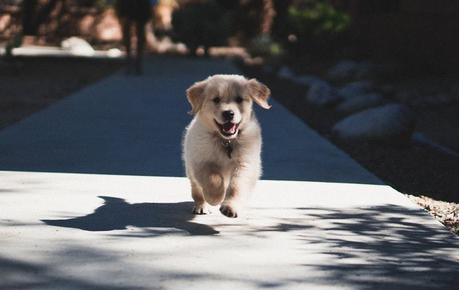Being the owner of a dog with a penchant for exploring can be a handful. At the same time you love your dog's playful spirit, it can be downright stressful trying to reel your dog in when it runs off for the upteenth time. If you're looking for advice, our five simple tips below will help you finally put an end to your dog's wandering ways.
 5 Tips on for Dog Who Always Wants to Run Away
5 Tips on for Dog Who Always Wants to Run Away
Image credit: Photo by Andrew Schultzon Unsplash
1. Set up quality dog gates
One of the most effective ways to deal with a dog with a mind of its own is to set up a quality dog gate in your house. A dog gate both helps keep your pet confined to a particular area of the house, and in turn, takes away their means to run away.
When browsing dog gates, you'll notice they come in a range of different styles and configurations. This is great if you have any specific height, color, or material requirements in mind, as you'll be able to find a gate that matches your particular needs.
Our top tip is to read the product reviews of each gate to get an idea of how the gate performs in real life. Reviews point out the advantages and disadvantages of the product, and sometimes even suggest usage tips. Just make sure not to get fooled by a fake reviews, as they could leave you disappointed with your purchase!
2. Change how you react when your dog runs aways
The manner in which you communicate with your dog can make a world of difference to your dog's behavior. Many owners mistakenly think they are engaging in healthy communication with their dog, when in fact their communication style is hindering their dog's behavior.
This is no more evident than when your dog runs away. Your natural instinct is likely to yell and chase after them, but you should instead be using an "indoor voice" which is calm but assertive.
You may be wondering why yelling doesn't work. We love this explanation by award winning dog trainer Jonathan Klein, who explains in a great article for Petful that "Humans are thinking, 'Oh no, you're going to die, you're my dog and I love you and I don't want you to die!' but dogs don't understand that. Dogs are thinking, 'Oh no, the longer you chase me yelling, the farther I'm running."
3. Train your dog to behave appropriately
Training your dog to behave properly is another important step you need take to curbing its habit of running away. You may think "it's too late to train my dog", but the good news is that it's never too late to train your dog. After all, they aren't going to teach themselves!
As their owner, it's your responsibility to navigate your dog through their good and bad behaviors. Training may seem daunting, but luckily there are a plethora of resources to support your training. We recommend checking out WikiHow's comprehensive guide and Petcha's short and sweet tips.
4. Start rewarding your dog for good behavior
Likewise to humans, dogs react best to positive reinforcement. Positive reinforcement is an important part of training that centers around rewarding your dog for their good behavior through praise, treats, and other modes of encouragement.
If your first reaction to your dog is scolding, taking away their toys, or anything that your dog would interpret as a punishment, you need to stop. It may seem as if you're letting your dog get away with misbehaving, but you're actually doing the opposite! By being reactive to their bad behavior, you may temporarily curb it, but you aren't teaching them how to behave well in the long term.
Positive reinforcement works because it teaches your dog what your expectations are, and duly rewards them for meeting them. They will gradually learn to associate good behavior with being rewarded, which will encourage them to change their behavior for the better. Read this article by Cesar's Way to learn more about using positive reinforcement.
5. Take precautionary action
Sometimes, despite all your hard work implementing the steps above, things don't go to plan. It's therefore important to ensure you're properly prepared in case your dog does run away.
While it's not pleasant to think about, when your dog isn't under your watch, things can go wrong. Injuries can be both emotionally and financially devastating, so it's a good idea to consider investing in pet insurance.
Different companies offer different plans, so before you commit, shop around and find a plan you feel comfortable with. If you don't want the full bells and whistles, you can even purchase an "injury only" plan. It's a small price to pay for the peace of mind that your dog will receive the treatment they need if it comes to it.

